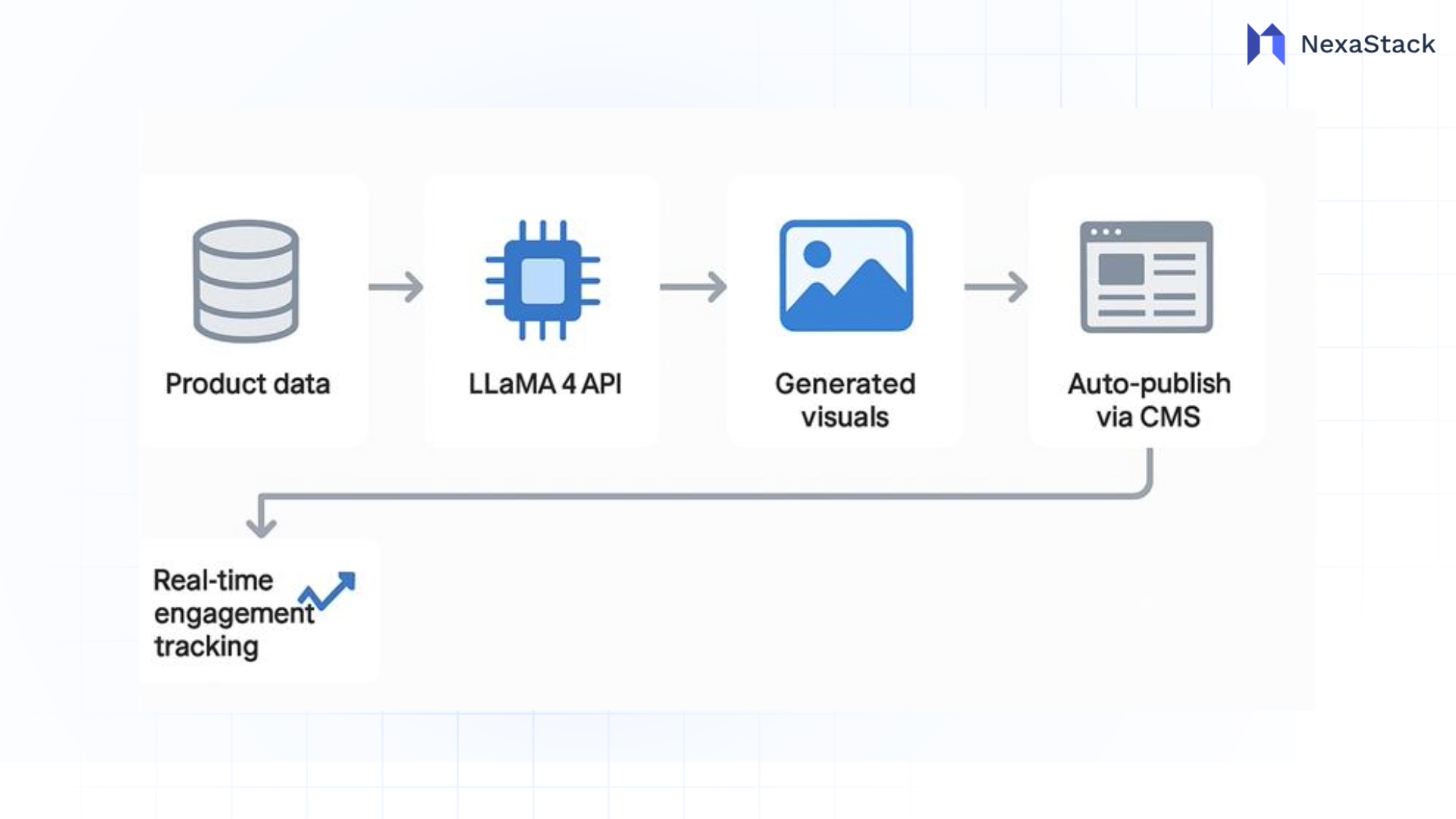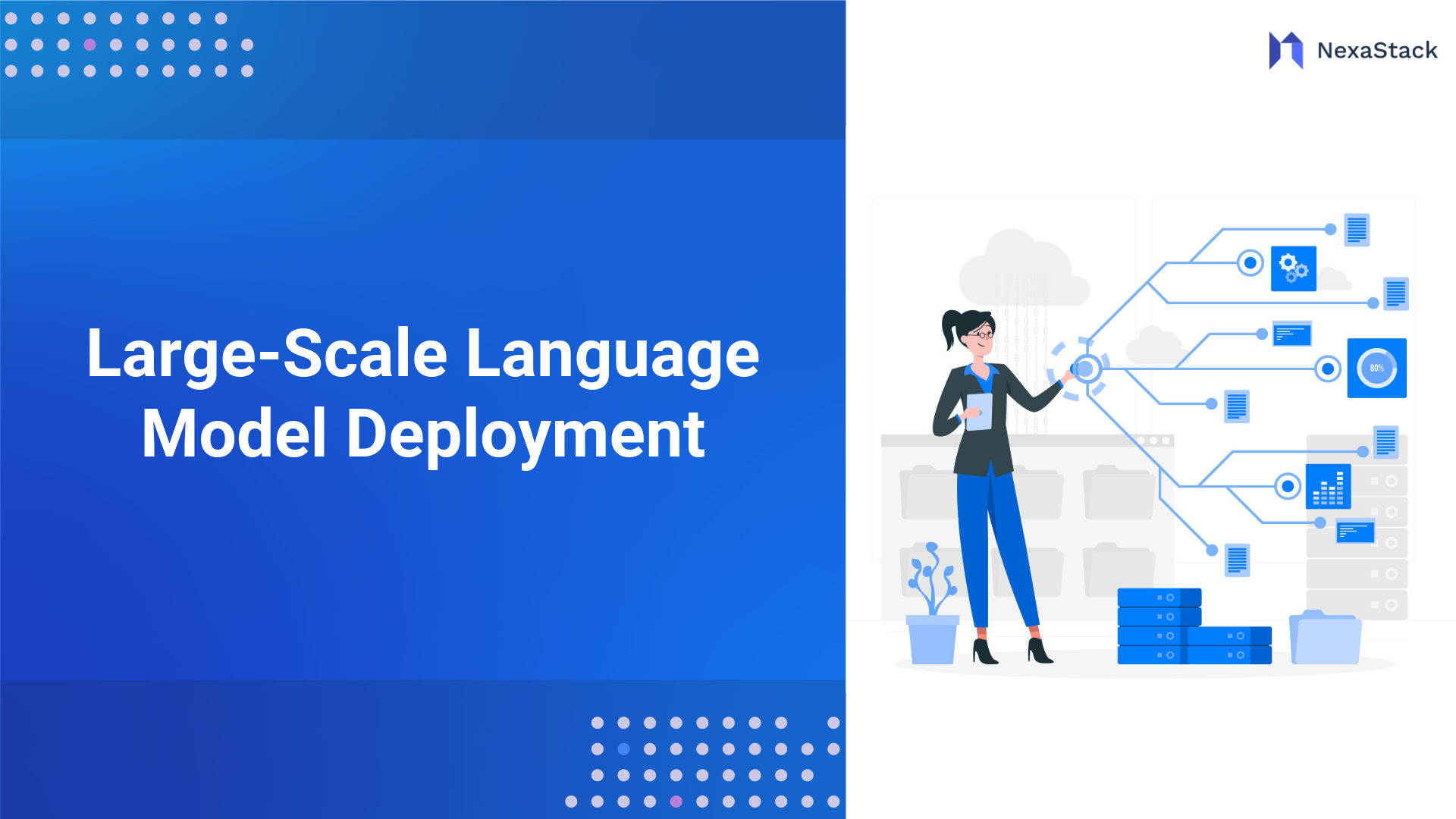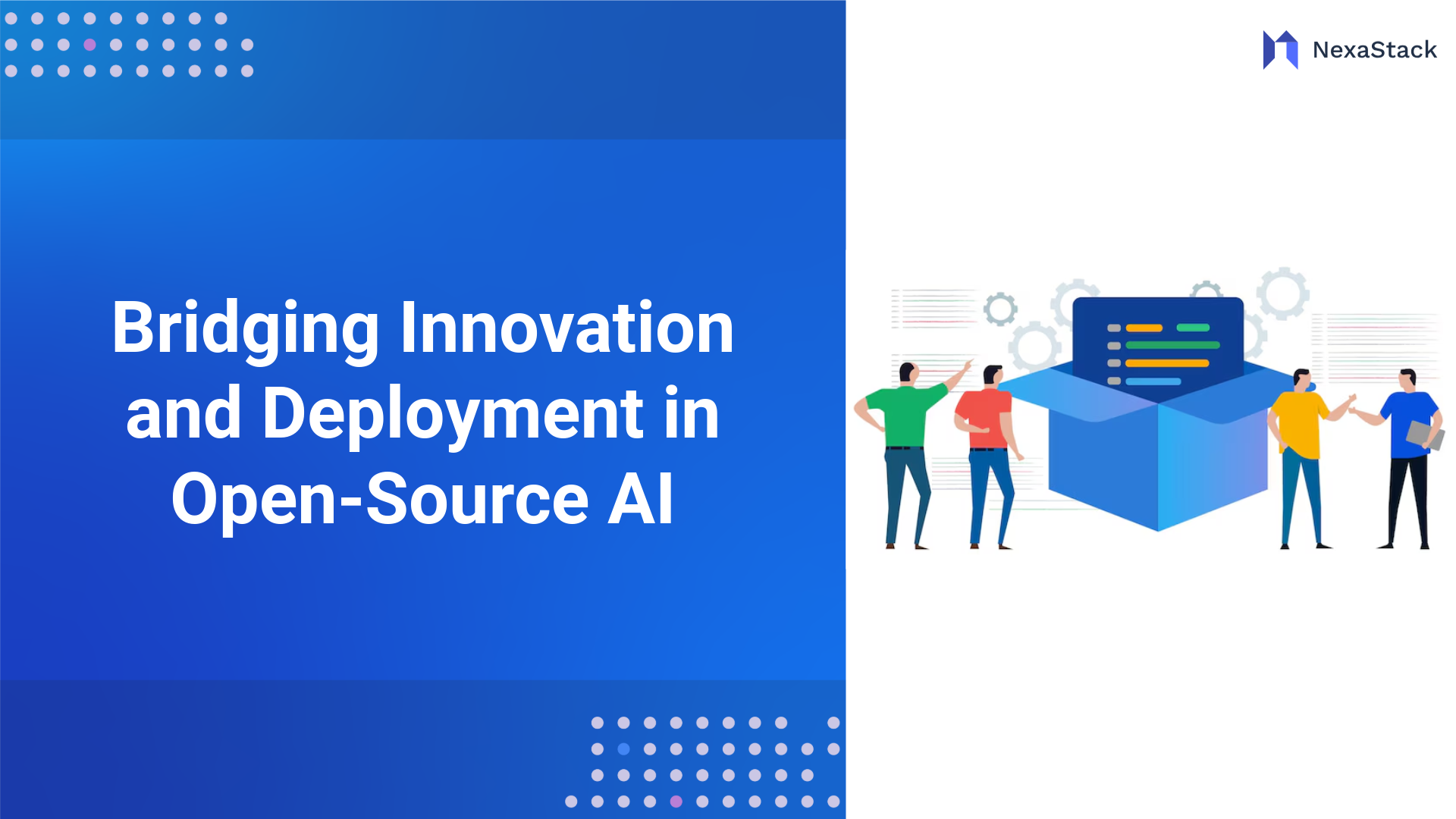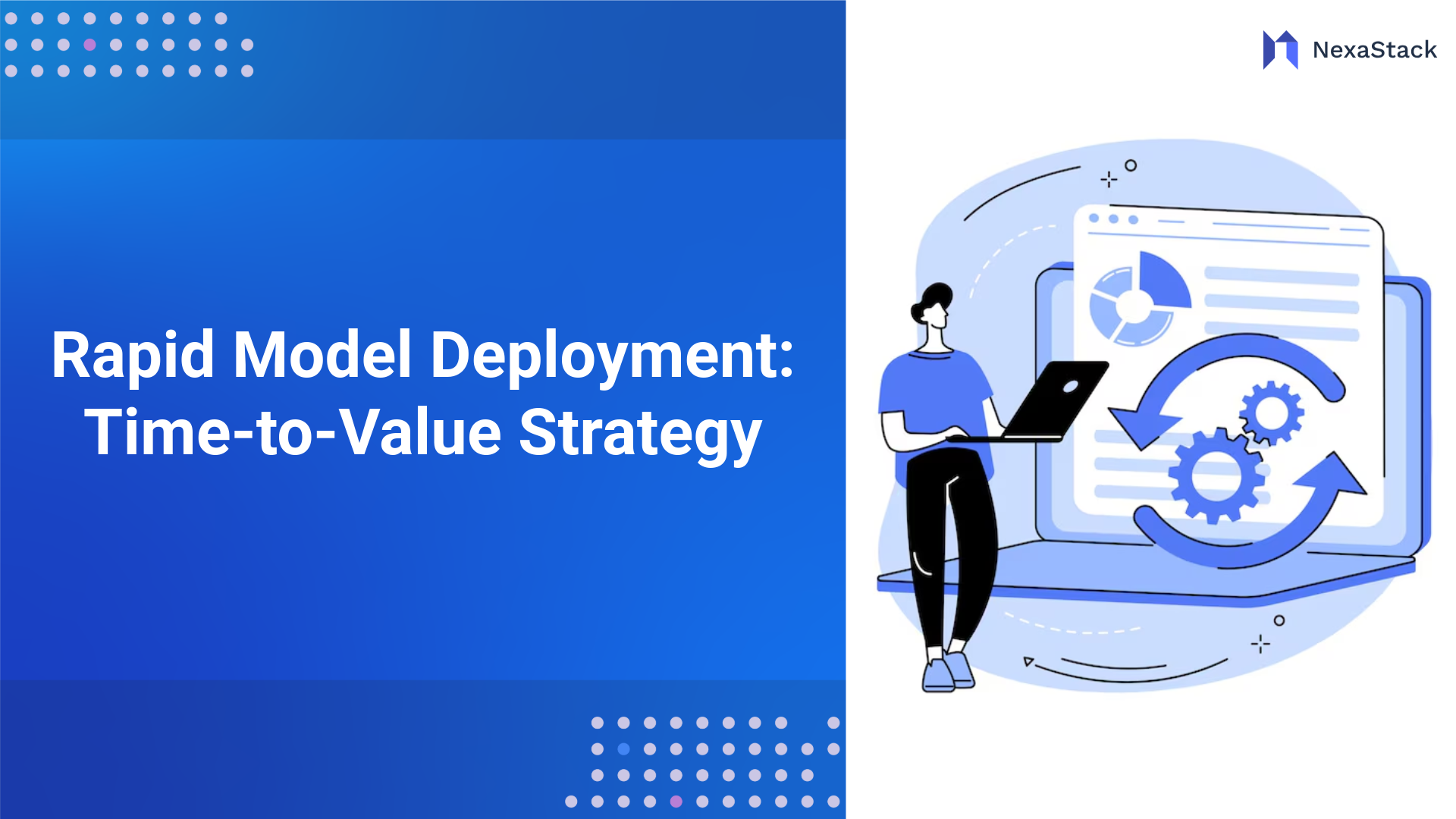Image Generation with Self-Hosted LLAMA Models
As demand for AI-generated visuals accelerates across industries—from marketing and entertainment to e-commerce and design—organizations are exploring more secure and customizable alternatives to public image generation platforms. Self-hosted LLAMA (Large Language and Multi-modal Models) models present a robust solution, offering the ability to generate high-quality images while maintaining complete control over infrastructure, data, and model behavior.
Unlike closed-source APIs, these models can be deployed in private environments, fine-tuned with domain-specific datasets, and optimized for performance at scale. This introduction marks the shift toward decentralized, adaptive image generation systems that prioritize ownership, flexibility, and security.
Why LLaMA 4 for Business Image Generation?
-
Speed Up Design: No more waiting days for visuals. LLaMA 4 creates brand-consistent images in minutes.
-
Save Time & Money: It reduces manual work so teams can focus on strategy instead of repetitive tasks.
-
Boost Creativity: Try out different styles and versions quickly, without extra costs.
-
Hyper-Personalisation: Generate tailored images for different audiences or campaigns with a few tweaks.
 Figure 1: An infographic depicting an AI-powered content creation workflow.
Figure 1: An infographic depicting an AI-powered content creation workflow.
Step-by-Step Guide to Deploying LLaMA 4 Models
- Value Assessment
Before you use LLaMA 4, step back and ask: What’s the goal? Are you trying to simplify content creation, reduce cost, or personalise at scale?
Here’s how LLaMA 4 delivers:
-
Faster Output: Need hundreds of visuals for a campaign? LLaMA 4 can create them in hours, not weeks.
-
Efficiency Gains: Your team spends less time editing and more time ideating.
-
Creative Freedom: You can instantly test different colour palettes, filters, and layouts.
-
Scalable Personalisation: Create unique visuals for each customer segment—without creating extra work.
A Real-World Scenario
Let’s say you run an online clothing store. A new seasonal collection drops, and you need 400 unique promo images—some for Instagram, some for email, and others for your homepage, with a traditional design process that could take your team two weeks. With LLaMA 4, you feed in your product details and brand colours, and within a few hours, the visuals are ready—on-brand, perfectly sized, and consistent across platforms. Major players like Zara and ASUS are already experimenting with AI-generated visuals for product listings and digital ads. It’s not futuristic. It’s happening now.
- Implementation Requirements
Getting Llama 4 up and running is more straightforward than it sounds. You don’t need a huge tech team—just a few essentials in place. Here’s a clear breakdown anyone can understand:
Hardware or Cloud Setup
-
Llama 4 needs powerful computing resources to run efficiently, especially when generating high volumes of images.
-
If you have on-premises servers with high-end GPUs (like NVIDIA A100s), you can host the model locally.
-
If not, you can use cloud platforms like AWS, Google Cloud, or Microsoft Azure to access GPU-powered machines on demand.
-
Cloud services help you avoid the cost and complexity of buying and maintaining your own infrastructure.
AI Toolkits
-
Llama 4 works seamlessly with well-known machine learning tools like PyTorch and Hugging Face.
-
PyTorch is a framework that makes building, training, and deploying AI models easier.
-
Hugging Face offers pre-trained versions of Llama 4 and simple APIs to plug into your applications.
-
These toolkits reduce the setup time and lower the technical barrier, so your team can focus on results instead of configuration.
Good Data
-
The quality of your image outputs depends entirely on the quality of the input data.
-
Use clean, high-resolution images from past campaigns, product photo shoots, design templates, or branding assets.
-
The more consistent and brand-aligned your input images are, the better your AI-generated results will be.
-
Avoid blurry, unorganised, or unrelated images—they only reduce the model’s performance.
Security
-
Strong data security is necessary when using AI models with internal or customer data.
-
Ensure compliance with data protection laws like GDPR, especially if you operate in or target the EU.
-
Use encryption to protect data in storage and transit.
-
Apply strict access control—only authorised users should have access to model training and deployment tools.
-
Conduct regular audits to check for data leaks, misuse, or unexpected model behaviour.
Dealing with Scalability
As demand grows, you’ll need infrastructure that keeps up. That’s where the cloud shines. You can scale up during a big campaign and scale down after. Also, model optimisation techniques like pruning or quantisation should be considered to speed things up without losing quality.
Pro Tip:
Start small with cloud-based deployments, test the waters, and then grow based on what works best for your needs. 
- Governance Framework
AI like LLaMA 4 can do amazing things—but only if you use it responsibly. It can go off track without the right rules and checks in place. You might end up with biased content, break privacy laws, or damage your brand’s reputation.
That’s why setting up a strong governance framework is key. Think of it as your AI rulebook—a way to keep things fair, safe, and aligned with your values.
Here’s how to do it right:
Avoid Bias
-
AI learns from the data you give it. If that data is unbalanced, the results will be too.
-
For example, if most of your training images feature people with one skin tone, your output might unintentionally exclude others.
-
The solution? Regularly check what your model is producing. If you notice any imbalance, add more diverse examples to the dataset.
-
This isn’t just about ethics—it’s good business. Inclusive visuals connect with a wider audience.
Protect Privacy
-
If your AI system uses customer data, you have to protect it. This isn’t optional—it’s the law.
-
Only collect what you need. Don’t keep sensitive information like personal addresses or payment info unless necessary.
-
Ensure all data is stored securely. This means using encryption, limiting who can access it, and regularly checking for vulnerabilities.
-
Follow rules like GDPR (in Europe) or CCPA (in California). These laws are serious, and violating them can lead to big fines.
Measure Model Behaviour
-
Once your model is live, don’t just forget about it. You need to track its performance over time.
-
Is it generating accurate, fair, and reliable results? Or is it slipping into unwanted patterns?
-
Use monitoring tools to watch for issues, like repeated mistakes or unexpected outputs.
-
This helps you catch problems early, before they become real risks.
Create an Oversight Team
-
Don’t leave AI decisions to just the tech team. Bring in people from across your company.
-
Your marketing team understands your brand and audience. Legal knows the rules. Tech makes sure everything works right.
-
Together, they can guide the model’s use in a balanced, responsible way.
-
Set up regular check-ins, document your decisions, and stay open to feedback.
Real-Life Example: Fixing Bias
A popular fashion brand discovered that its AI was showing lighter skin tones more frequently than others in ad creatives. It responded by retraining LLaMA 4 with a broader range of images, hiring inclusivity experts, and adding checks in its creative process. The result? A more diverse visual identity and a boost in customer trust.
- Performance Metrics
If you can’t measure it, you can’t manage it. Here’s how to know if LLaMA 4 is really making an impact:
-
Image Quality: Do the outputs look polished? Are they aligned with your brand guidelines?
-
Consistency: Are different visuals uniform in tone, style, and formatting?
-
Efficiency: Are you saving time or budget compared to before? Track hours saved.
-
User Engagement: Look at ad clicks, social shares, and website conversions.
-
Accuracy: Are there fewer revisions? Are the images relevant and valuable?
Example:
Run an A/B test. Use LLaMA 4 images in one version of a social media ad, and human-made images in another. See which performs better.
Industry Tip:
Your competitors are already using AI. To stay ahead, you need to not only match their pace but find smarter ways to integrate AI into your content workflows.
- Integration Strategy
You’ve decided to use LLaMA 4. Now, make it work smoothly with what you already have.
Here’s how:
-
Use APIs: Connect LLaMA 4 to your design tools, content management systems, or e-commerce platforms. Example: Automatically generate thumbnails when uploading a new product.
-
Train Your Team: Help your designers and marketers understand how to use LLaMA 4, not fear it. It’s a creative partner, not a replacement. Set up internal workshops or a “sandbox” environment where they can play with the model.
-
Test with a Pilot: Don’t go all-in right away. Start with a single campaign. Test results, tweak your approach, and scale once it works.
Visual Workflow Tip:
Try a content creation pipeline like this:
 Figure 3: Visual Workflow
Figure 3: Visual Workflow - ROI Measurement
You must measure performance and financial returns to know if your AI investment is paying off. It’s not just about whether the AI works, but whether it’s worth it.
Here’s how to break it down:
Cost Savings
-
Start by comparing how much money you save using AI versus the traditional way.
-
For example, if creating marketing content used to take a team days (or even weeks), AI can automate much of that, saving time and labor costs.
-
In this case, let’s say AI saves your business $500,000 every year.
Business Impact
-
Look beyond just dollars. What’s the overall effect on your business?
-
Track improvements like customer engagement, click-through rates, or lead conversions.
-
Also, think about productivity. Is your team getting more done now that AI handles the repetitive stuff?
Scalability Potential
-
AI doesn’t just help today—it can scale with you.
-
As your business grows, the same AI system can be used across new campaigns, teams, or regions without starting from scratch.
-
This future potential is part of the ROI, too.
ROI Calculation
Here’s the simple formula for return on investment (ROI):
ROI (%) = [(Total Gains from AI – Total Costs) / Total Costs] × 100
Using your numbers:
- Total Gains = $500,000 (annual savings)
- Total Costs = $200,000 (deployment cost)
ROI = [($500,000 – $200,000) / $200,000] × 100 = 150%
That means that for every dollar you spend, you earn $1.50 back. That’s a strong return.
 A positive ROI indicates a successful AI investment. Continuous monitoring helps refine and improve AI deployment over time.
A positive ROI indicates a successful AI investment. Continuous monitoring helps refine and improve AI deployment over time.
Final Thoughts: Ready to Scale AI-Driven Image Generation?
LLaMA 4 isn’t just an AI model. It’s a creative powerhouse. It helps businesses work smarter, create faster, and build stronger connections with their audience. If your team is still stuck in slow content cycles or juggling too many design requests, this is your sign to upgrade.
The best part? You don’t have to do it alone. AI communities like Hugging Face, cloud partners, and AI consulting teams can guide you every step of the way.
Next Steps with Image Generation
Talk to our experts about implementing compound AI system, How Industries and different departments use Agentic Workflows and Decision Intelligence to Become Decision Centric. Utilizes AI to automate and optimize IT support and operations, improving efficiency and responsiveness.



